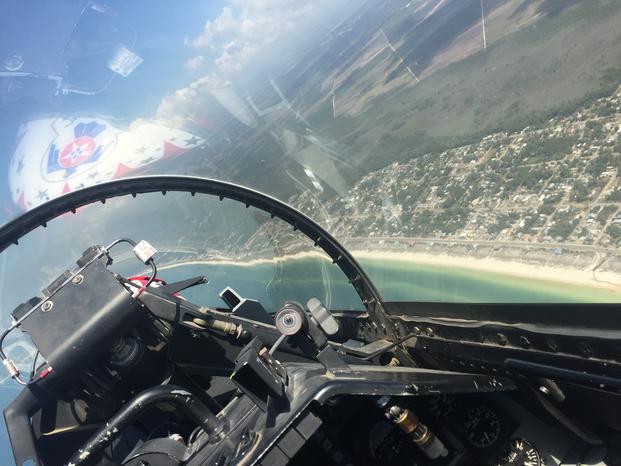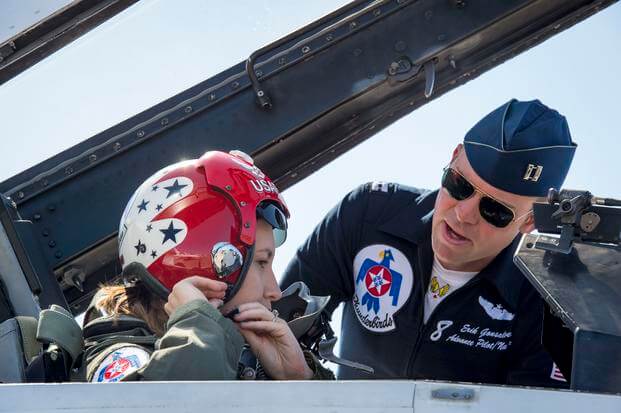TYNDALL AIR FORCE BASE, Florida -- Just like their combat Falcon counterparts, the Air Force Thunderbirds F-16s are receiving the same upgrades to keep the jets flying for decades into the future, officials said.
The Thunderbirds fly the Block 52 variant F-16C and D models.
The jets have a Pratt & Whitney F100-PW-229 engine. On board, the Thunderbirds use the same data link system, LINK 16, much like a warfighter.
RELATED: Will the F-35 Be the Next Thunderbirds Jet?
"We use it for situation awareness, in terms of where we're at in the [temporary flight restriction] and [to see] where the other teammates are," said Maj. Nick Krajicek, the slot pilot, flying the No. 4 jet.
When asked if the Block 52 variant F-16s will be receiving the same enhancements such as modular computer upgrades and agile beam radars, Lt. Col. Jason Heard, the commander and leading pilot of the air demonstration team, said, "Yeah, pretty much. We would get the last out of the F-16s to receive those upgrades, but we are scheduled."
Military.com sat down to interview pilots here at the base and took a ride up in the F-16D two-seater on April 21.

Military.com looks out the cockpit of the F-16 while in flight with Thunderbird 8. (Photo: Oriana Pawlyk).
The Thunderbirds are sometimes a good testbed for some basic structural upgrades, they said.
"Right now we are the first F-16s to be doing the Service Life Extension Program," or SLEP, Heard said. "The first to do the bulkhead, required inspections."
Heard said the Thunderbirds are the first to get the SLEP upgrades because "we apply a severity factor to our aircraft use that is higher than most F-16s." The aircraft -- which can reach speeds of up to 1,500 miles per hour and altitudes of more than 50,000 feet -- fly multiple shows a year, in addition to routine training.
RELATED: Air Force Opts to Keep F-16s Flying for Decades Longer
For shows, the multi-role fighter will fly roughly around 720 miles per hour; however, the F-16C models, which have no external weapons, have more thrust on the jet (29,100 pounds as opposed to the standard 27,000), which also takes its toll.
"We burn through the hours faster because the severity of the flying, the G-forces, etc. are higher," Heard said. The Thunderbirds' G-force limitations vary from negative three to positive nine, and a few tenths of a point incrementally thereafter. (For the record, Military.com flew with the Thunderbirds, pulling 9.3 Gs).
Currently, one Thunderbird is going through SLEP at their depot facilities at Hill Air Force Base, Utah, Heard said.

Capt. Erik "Speedy" Gonsalves does a quick backseat check with Military.com reporter Oriana Pawlyk before takeoff. (Photo: Air Force Thunderbirds).
The Thunderbirds will normally fly six jets during a show, but could fly eight. They have two spares per show -- either C or D models -- but have three backup jets total, bringing their fleet to 11 jets.
In March, "we only possessed six to seven aircraft," Heard said because of ongoing maintenance, modification or paint jobs happening to the remaining jets.
Heard added, "To do a mission where you're flying six aircraft total twice a day -- our utilization rate was 30, [which means] our airframe flew over 30 times each in a month.
"That's unheard of. Most airplanes may fly 10 to 12 times in a month," he said.
%embed1%










